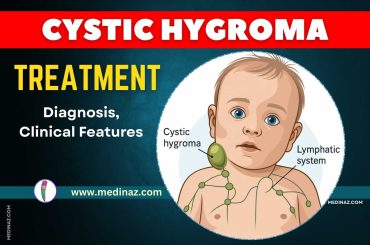Angina USMLE Notes & Mnemonics contains all the high-yield points you need to know.
Definition:
- Angina Pectoris: Chest pain or discomfort due to myocardial ischemia, without myocardial infarction. (Ref)
Types:
- Stable Angina: Predictable chest pain with exertion or stress, relieved by rest or nitroglycerin.
- Unstable Angina: Part of acute coronary syndrome, chest pain occurs at rest or with minimal exertion, not relieved by nitroglycerin.
- Variant (Prinzmetal’s) Angina: Due to coronary artery spasm, occurs at rest, and is often cyclic.
Pathophysiology:
- Imbalance between myocardial oxygen supply and demand.
- Stable Angina: Due to atherosclerotic plaques limiting blood flow during increased demand.
- Unstable Angina: Often due to plaque rupture and partial thrombosis.
- Variant Angina: Spasm of the coronary arteries, not always associated with atherosclerosis.
Risk Factors:
- CAD risk factors: Age, smoking, hypertension, hyperlipidemia, diabetes, family history.
- Spasm triggers (for Variant Angina): Smoking, cocaine use, cold weather.
Clinical Features:
- Chest pain: Described as pressure, tightness, or squeezing, typically retrosternal.
- Radiation: To the neck, jaw, shoulder, or arm.
- Associated symptoms: Dyspnea, nausea, diaphoresis.
- Relief: Rest and nitroglycerin help in stable angina.
Diagnosis:
- Clinical presentation.
- ECG: ST depression and T-wave inversion in stable angina during pain.
- Stress Testing: To provoke symptoms and detect ECG changes.
- Coronary Angiography: Gold standard to visualize coronary anatomy.
Management:
- Lifestyle modification: Smoking cessation, diet, exercise.
- Pharmacotherapy:
- Nitroglycerin: For acute attacks.
- Beta-Blockers: First-line for chronic management.
- Calcium Channel Blockers: If beta-blockers are contraindicated or ineffective.
- Antiplatelet agents: Aspirin, clopidogrel.
- Statins: To control hyperlipidemia.
- Revascularization: PCI or CABG for significant CAD or refractory symptoms.
High-Yield Mnemonic for Risk Factors: “A SMOKING GUN“
- Age
- Sex (male or postmenopausal female)
- Medical history (diabetes, hypertension, hyperlipidemia)
- Obesity
- Kin (family history of CAD)
- Inactivity (sedentary lifestyle)
- Nicotine (smoking)
- Glucose intolerance
- Unhealthy diet
- Negative stress (psychosocial factors)
High-Yield Mnemonic for Treatment: “ABCDE“
- Antiplatelet therapy/ACE inhibitors
- Beta-blockers/Blood pressure control
- Cholesterol management/Cigarette cessation
- Diet and weight management/Diabetes control
- Exercise
Chart: Features of Angina Types
| Feature | Stable Angina | Unstable Angina | Variant Angina |
|---|---|---|---|
| Precipitating Factors | Exertion | Rest or minimal exertion | Rest (often at night) |
| Relief By | Rest/Nitroglycerin | Often not relieved by nitroglycerin | Nitroglycerin/Ca-channel blockers |
| ECG During Pain | ST depression/T-wave inversion | ST deviation, may be transient | Transient ST elevation |
| Coronary Arteries | Fixed stenosis | Ruptured plaque with thrombosis | Spasm, may have normal arteries |
| Response to Stress Test | Positive | Not indicated during acute phase | Negative (unless during spasm) |
Check other important USMLE Notes
Note: For USMLE, understand the difference between stable, unstable, and variant angina in terms of clinical presentation, ECG findings, and management strategies. Also, be aware of the role of risk factor modification and the rationale behind the use of each medication.
A Visual Learning Platform





